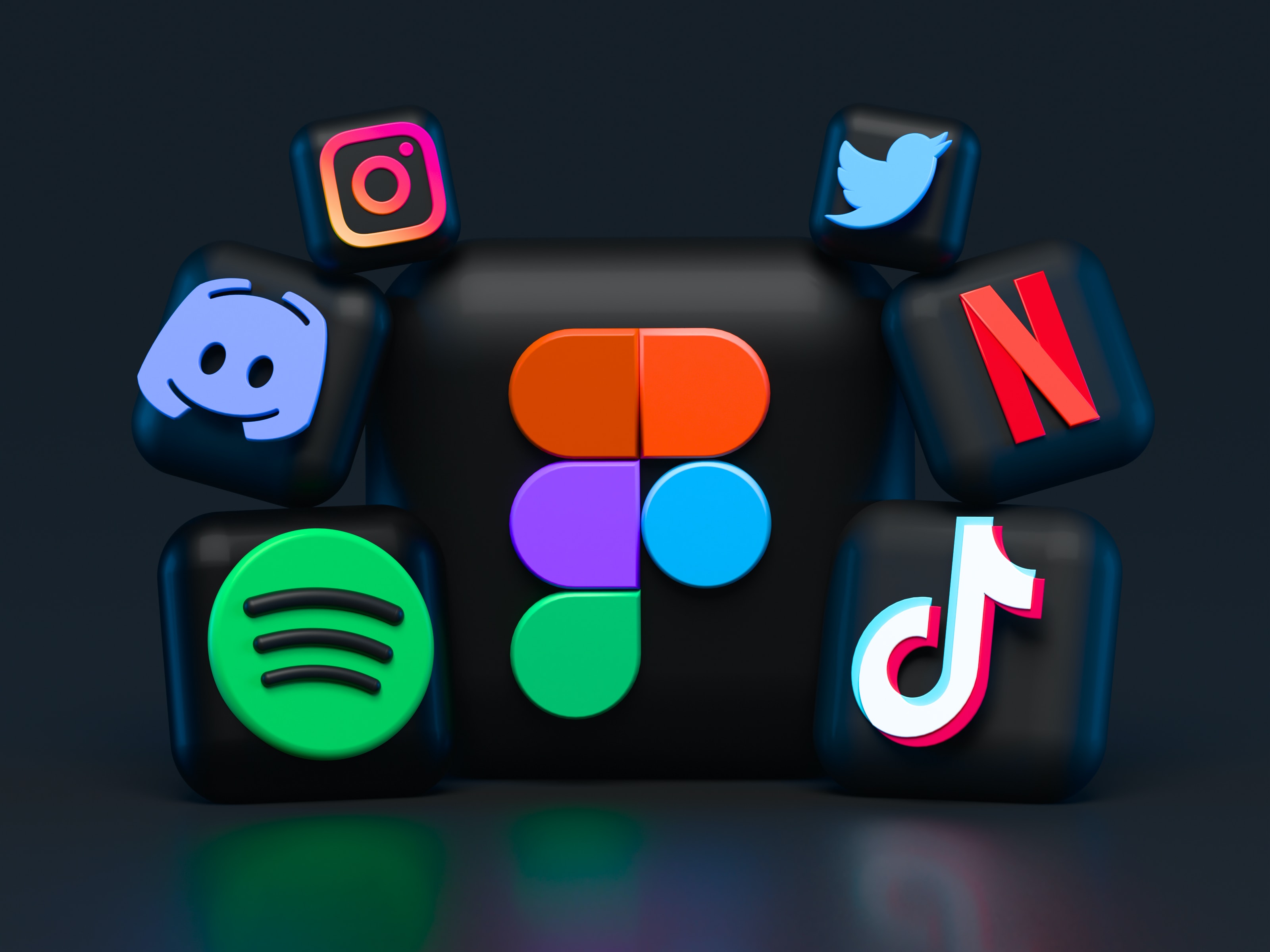What you will get from this article:
- Understand the importance of customer relationships
- Learn about how to improve effective customer service on social media
- Know the benefits of customer service automation on social media

Social media has revolutionized the way businesses communicate with their customers. With over 4.9 billion people accessing social media worldwide as of 2023, social media has become a key platform for customer service.
Social media has become a crucial customer service channel for businesses of all sizes.
It's an easy way for customers to reach out to your brand and get a quick response, and also a great way to get feedback from your customers and learn their preferences.
Effective social media customer service can improve customer satisfaction, increase loyalty, and drive revenue.
You can use social media to build stronger customer relationships with these effective strategies.
Personalizing Customer Interactions
Personalizing customer interactions is another way to build stronger relationships.
When you engage with your customers directly, they'll feel like they're being heard and understood.
Social media is a great place for this kind of interaction because it allows you to connect with them on their own terms, not just when they're visiting your website or reading an email from you.
It also gives them the opportunity to ask questions or share feedback that may have otherwise gone unaddressed (or been addressed too late).
Personalized messages can be sent through social media platforms such as Twitter or Facebook Messenger, but there are other ways of personalizing as well:
- Use customer data - You can use data about each individual person's interests and preferences in order to send personalized messages based on those interests and preferences; this will help make sure that each person feels like their concerns are being heard by someone who cares about them specifically rather than just anyone who happens across their tweet/post/comment etcetera.
- Use visuals - Visuals such as photos are great ways of engaging customers because they allow people who might not normally read long blocks of text to easily digestible information while still getting important details across quickly enough so no one misses anything important.
Creating Engaging Content
Creating engaging content is one of the most important aspects of social media marketing.
If you want to build strong customer relationships, you need to make sure that your posts are interesting and relevant to your audience.
One way to do this is by providing valuable information in the form of blog posts or videos that provide helpful tips or advice on how they can use your product/service in their day-to-day lives.
Another way is by using storytelling techniques such as creating an infographic with statistics.
This could help build brand awareness amongst potential customers who may not have heard about your company yet but might be interested after seeing some interesting facts about your product.
Building Your Brand
- Create a consistent brand voice.
- Use visuals to convey your message.
- Create a positive customer experience
Measuring Your Progress
Measuring your progress is a great way to keep track of how well your social media strategy is working. Here are some things you can do:
- Track customer engagement.
The number of likes, comments, and shares on posts will tell you if people are interested in what you're posting or not.
- Measure ROI (return on investment). If there's no direct link between the content that's being shared and sales, then the return isn't as high as it could be, but this doesn't mean that sharing isn't worthwhile.
Sharing content helps build awareness about your brand or product among potential customers who may not have heard about it before; these new audiences may become future customers down the line when they see something else from your company that appeals directly to them based on their interests at that moment in time.
Providing Support
Providing quick and helpful customer service is an essential part of building strong relationships with your customers.
Use social media to handle customer complaints, answer questions, and provide helpful tips or advice.
If you can't solve their problem right away, tell them when they can expect a response from you and follow through on that promise as it's important for building trust.
Using Social Media as a Feedback Tool
Social media is also a great way to solicit feedback from your audience so that you can improve your products or services based on what they want most.
You'll get direct insight into their needs without having to ask them directly (which might make them feel uncomfortable).
Gathering Insights
When you want to build stronger customer relationships, it's important to understand your customers.
That means gathering insights about their needs and preferences.
The first step is to use the data you already have on hand, whether that's customer information, analytics, or feedback from surveys or interviews with customers.
You can use this information as a starting point for further investigation by asking questions like:
- What are my customers' pain points?
- How do they interact with my brand today?
- How can I improve their experience with me going forward?
Engaging Your Audience
Engaging your audience is the key to a successful social media strategy.
To engage customers, you can use visuals, contests and giveaways, influencers, or any combination of these tools.
-
Visuals: Use images and videos to communicate your brand's personality in a way that's easy for people to understand.
This is especially important when you're trying to reach new audiences who may not know much about what you do or why they should care about it.
Visuals help break down barriers between them and your business by showing how relevant it is in their lives (and vice versa).
Contests/Giveaways: Giveaways are an effective way of generating excitement around an upcoming event or product launch by offering something valuable as an incentive for participation in the contest itself.
If done well these types of promotions can also help build trust between brands and consumers because they show companies care about supporting their customers' success rather than just selling something at all costs.
Utilizing Automation
-
Automation tools) can help you streamline processes and save time, but they also allow you to measure success.
For example, if a customer has reached out to you with a question via email or social media, an automation tool can automatically respond with an answer based on their previous interactions with the company.
This allows your team members to focus on more complex issues instead of responding to simple questions over and over again.
-
Use analytics to measure success: In addition to using automation tools for customer service purposes, it's important that companies also track how well these efforts are working in order for them to make adjustments as needed--or even stop using certain platforms altogether if they aren't proving effective enough.
Whether you like it or not, the world is becoming more and more automated.
With the swift growth of automation, you need to adapt to technology to leverage your business.
According to research by Harvard Business Review, 24% of companies take longer than 24 hours to respond, another 23% don’t respond at all.
While in online communication, people expect to receive customer support immediately.
In customer service, the most essential feature of automation is speed, while there are many more significant benefits to offer for optimizing social media customer service.
Benefits of Automation for Social Media Customer Service

- Improve response times
One of the key benefits of social media automation is that it can help improve response times.
Social media automation tools can be set up to respond automatically to certain types of customer inquiries or complaints and let the customer know that someone will be in touch soon.
This can help set expectations and provide a more immediate response, even if a human response may take longer.
- Increase efficiency
Social media automation can also increase efficiency.
By automating repetitive tasks, such as scheduling posts or responding to frequently asked questions, businesses can free up staff time to focus on more complex customer inquiries or complaints.
This can help improve the overall quality of customer service and reduce the risk of burnout among customer service staff.
- Enhance consistency
Another benefit of social media automation is that it can help enhance consistency.
By setting up automated responses, businesses can ensure that all customer inquiries and complaints receive a timely and consistent response.
This can help improve customer satisfaction and loyalty, as customers know what to expect when they reach out to a business on social media.
- Provide 24/7 customer service
By automating responses to customer inquiries or complaints, businesses can provide an immediate response, even outside of regular business hours.
This can help improve customer satisfaction and prevent complaints from escalating.
- Track and measure success
Finally, social media automation can help businesses track and measure the success of their social media customer service efforts.
By using analytics and reporting tools, businesses can track response times, customer satisfaction, and overall engagement.
This can help identify areas for improvement and optimize the social media customer service strategy accordingly.
Conclusion
Social media has become a critical platform for customer service, as it allows customers to connect with businesses easily and quickly.
Effective social media customer service can improve customer satisfaction, increase loyalty, and drive revenue.
Using automation tools for social media customer service can help businesses save time and improve efficiency.
Automation tools can be used to manage customer inquiries, respond to messages, and provide personalized customer service.
These tools can also be used to schedule posts, track metrics, and analyze customer data to improve overall performance.
Chatbots are a popular example of automation tools that can be used to provide quick and consistent responses to common customer inquiries.
However, it's important to use automation tools strategically and not rely on them entirely.
It's still important to have a human touch in customer interactions to build strong relationships and provide personalized service.








